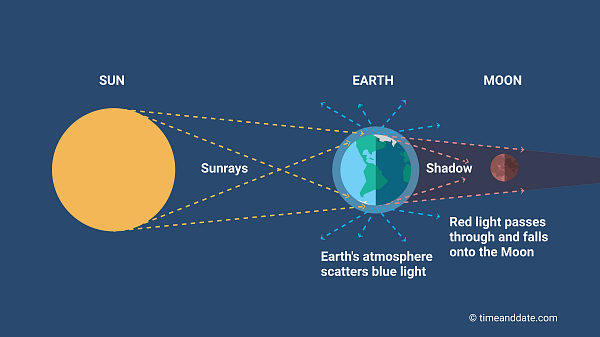
Total lunar eclipses, commonly known as “blood moons,” only happen during full moons when the Earth completely shields the moon from the sun. Once the sun, earth and the moon are exactly aligned, light from simultaneous sunrises and sunsets around the earth project onto the moon, briefly causing a coppery-red coat on the moon’s surface. The more dust or clouds in the Earth’s atmosphere during the eclipse, the redder the moon will appear, according to NASA.
From the moon, the total lunar eclipse would shine a bright red aura around the Earth’s dark surface.
Unlike the blinding effect of solar eclipses, special equipment is not needed to see the reddish hues, but observing in a dark environment away from bright lights makes for the best viewing, according to NASA.
Astronomers can determine total lunar eclipses years in advance due to their knowledge of the moon’s orbital patterns.

“It all comes down to knowing the orbit of the moon very exactly where we can predict down to the minute an eclipse of the sun and moon,” says Noah Petro, a scientist with the Lunar Reconnaissance Orbiter Project at NASA.
This is the last time residents across the United States will be able to see a totally dyed moon until May 14, 2025.

